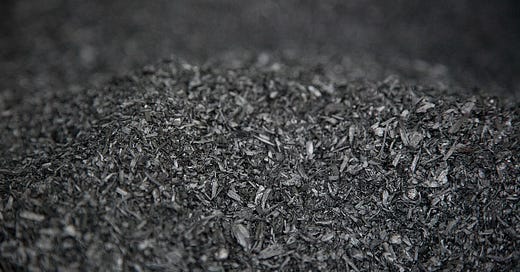Biochar, also known as ‘black gold’, is one of the most promising carbon removal technologies.
When biomass or other biogenic materials are burned at high temperature in the absence of oxygen (a process known as pyrolysis), a solid with a stabilised carbon content is produced known as biochar. The substance bears a striking resemblance to coal, and is aptly referred to as Pflanzenkohle, meaning plant coal in German. In English it is more commonly known as charcoal.
Biochar has been used for centuries as a soil improver and pesticide. However, it is biochar’s properties as a carbon sink that is getting the scientific community and many climate focused investors most excited.1
Pyrogenic Carbon Capture and Storage (PyCCS), or more simply biochar, is by far the most advanced of all the engineered carbon removal methods currently being used to sequester carbon from the atmosphere. Interest in the carbon removal method received a boost in October 2018 after the IPCC classified biochar as a promising “negative emission technology”.2




